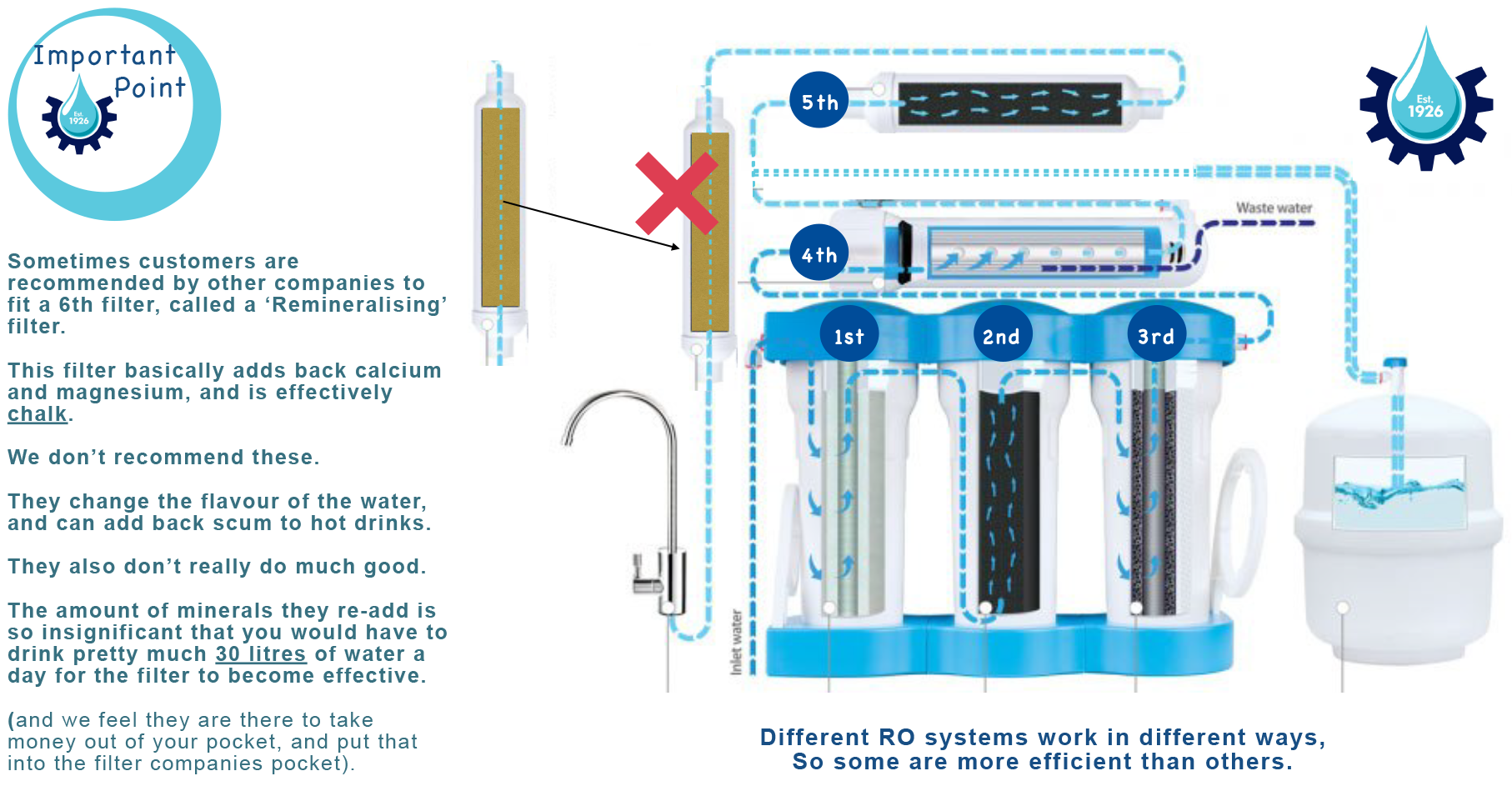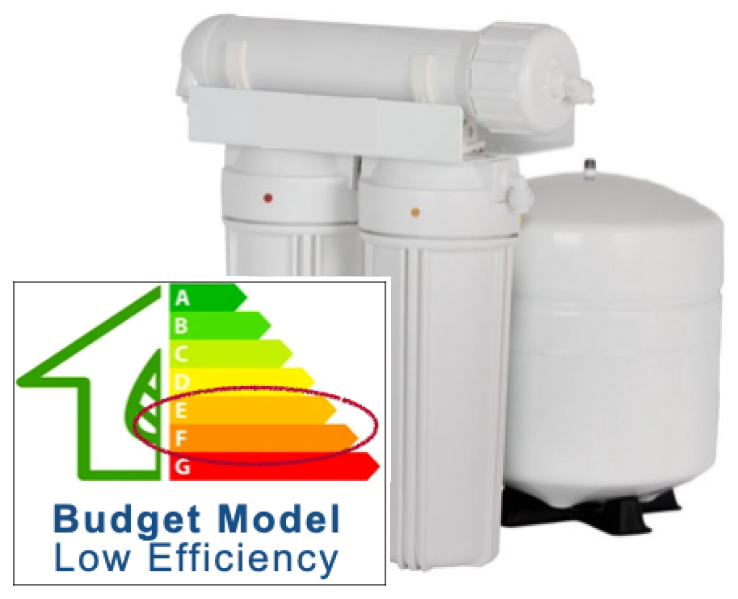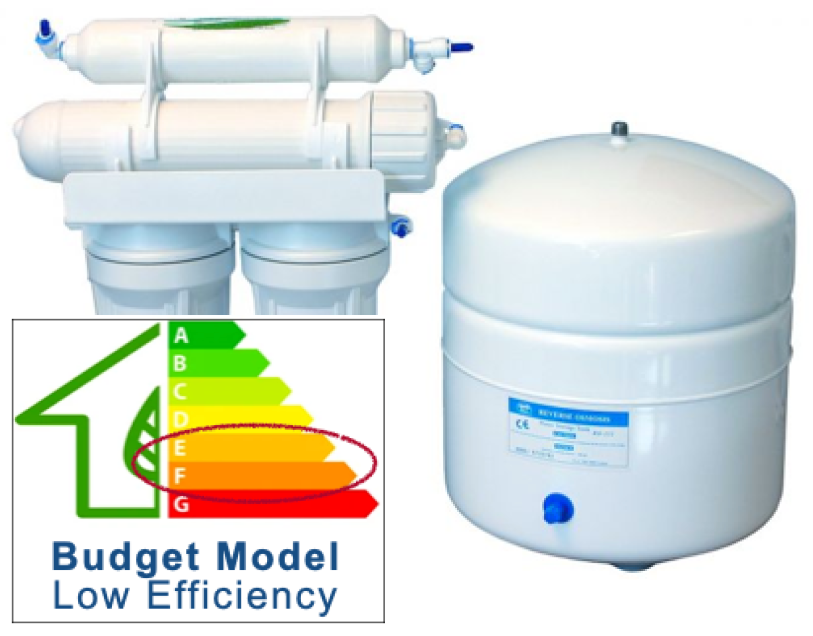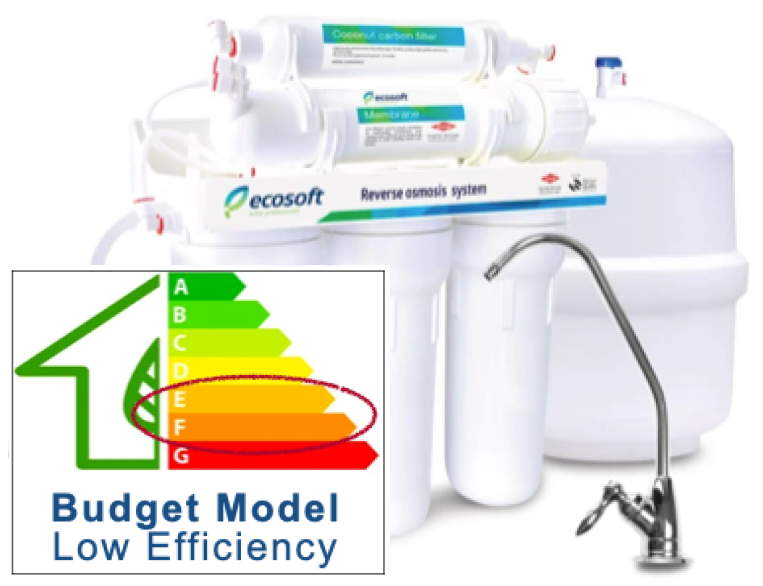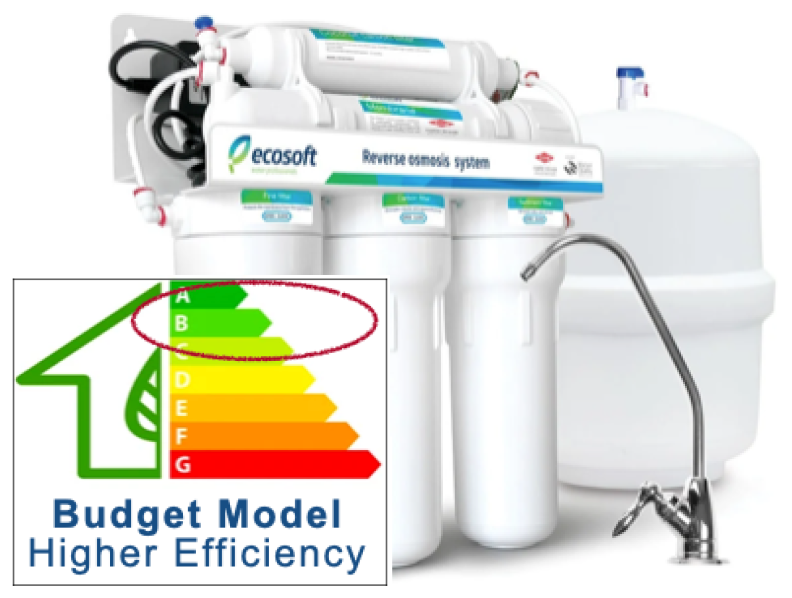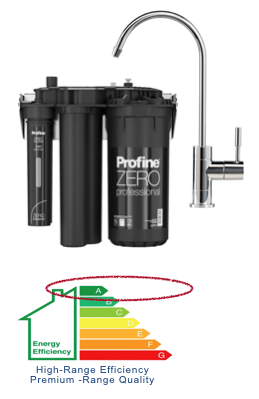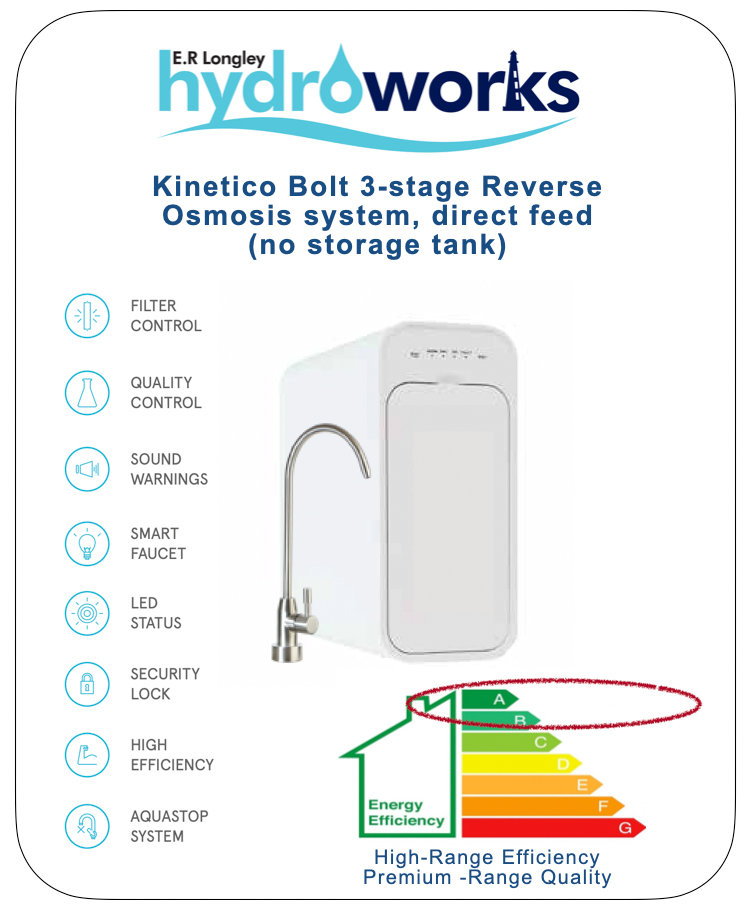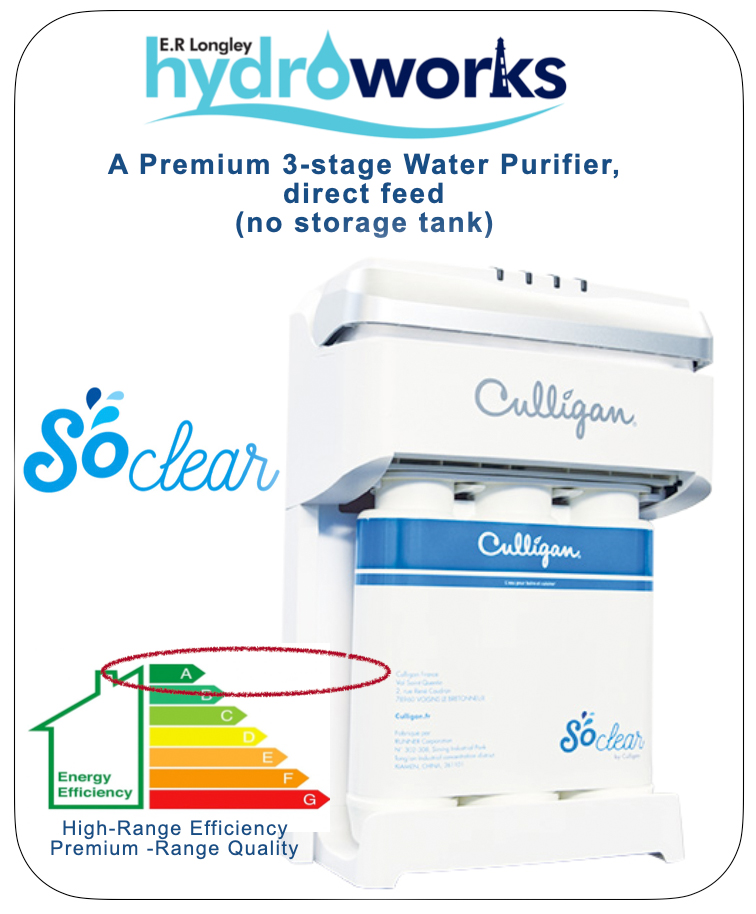Discover the Power of Water Purification Through Reverse Osmosis
Why You Might Wish To Consider Water Purification?
As the internet has evolved, so too has public awareness of water contamination - and it’s growing all the time.
Across the UK, our water is recycled and treated by regional water suppliers, time and again, but to very high safety standards.
Did you know...?
While not from any specific scientific paper that I can find, there is a thought-provoking statement used by science communicators, educators, and environmentalists to get people thinking about how recycled our water really is.
The idea is:
-
Earth has a closed water system — we’re not getting new water from space (barring a comet or two!), and it doesn’t leave.
-
All water gets recycled continuously through evaporation, condensation, rainfall, groundwater flow, and - yes - passing through living beings, including animals and humans.
-
So, statistically speaking, the water you drink very likely has been through numerous organisms, including - so they say - at least 6 sets of kidneys, at some point in its history, and more so in built up areas where the water is treated direct from the water treatment plants and not from reservoirs.
So, I guess it’s a provocative-but-playful exaggeration meant to get people appreciating water treatment, purification systems (like RO!), and the miraculous nature of Earth’s recycling systems.
In my personal opinion, many of these comments are driven by the desire for profit, rather than the desire to sell the right water quality for consumers. That said, we live in our own homes, and we each have the right to make the decision that feels right for us.
How Reverse Osmosis Works - And What It Removes
Reverse osmosis (RO) is one of the most powerful and proven methods for purifying water. It’s trusted not just in homes, but also in hospitals, dental surgeries, laboratories, window cleaning setups, and even food and drink manufacturing — wherever water needs to be reliably clean and safe.
So how does it work?
The magic is done within an ultra-fine membrane — like a high-tech microscopic strainer — that filters water at the molecular level. As water is pushed through this membrane under pressure, impurities are trapped and rejected to drain, leaving you with only the purest water at your tap.
The purified water (typically 97.9% free from contaminants) flows directly to your dedicated drinking tap or 3-way kitchen tap. And in more specialist applications, like dental and medical clinics or high-precision manufacturing and window cleaning, that figure will rise to as much as 99.9% purity.
What Exactly Does RO Remove?
Reverse osmosis removes an incredible range of contaminants — many of which we’d rather not be drinking.
Here’s a full list of common impurities removed by a typical residential RO system, along with approximate removal rates:
-
Fluoride: 85–92%
-
Lead: 95–98%
-
Chlorine: 98%
-
Pesticides: up to 99%
-
Nitrates: 60–75%
-
Sulfate: 96–98%
-
Calcium: 94–98%
-
Phosphate: 96–98%
-
Arsenic: 92–96%
-
Nickel: 96–98%
-
Mercury: 95–98%
-
Sodium: 85–94%
-
Barium: 95–98%
-
Potassium: 85–95%
-
Iron: 94–98%
-
Zinc: 95–98%
-
Forever chemicals (PFOS): 90–99%
-
Magnesium: 94–98%
-
Cadmium: 95–98%
-
Cyanide: 85–92%
These figures speak for themselves — it’s easy to see why reverse osmosis is trusted not just in homes, but in industries where ultra-pure water is absolutely essential.
Do We Really Need Those Minerals in Our Water?
It’s a common question — but here’s a simple truth:
We get almost all the essential minerals our bodies need from our food, not from drinking water.
Take calcium, for example — it’s far better sourced from:
-
Dairy products like milk, cheese and yoghurt
-
Dark green leafy vegetables (hello spinach and kale!)
-
Nuts, seeds, and beans
-
And even everyday favourites like cereals and bread, which are often fortified with extra minerals
In fact, the trace amounts found in water (especially once filtered) play a tiny role compared to our diets.
And here’s something I’ve noticed over the years — many of our customers working in healthcare (including dentists and doctors) choose to install reverse osmosis systems in their own homes. That speaks volumes...
Even the experts are choosing to take extra care over the water they and their families drink.
- - - - - - - - - - - - - - - - - - - - - - - - - - - - - - -
Understanding RO Filters - And How to Keep Running Costs Down
Every reverse osmosis system uses a series of filters to clean and purify your water. These work in stages:
-
Stages 1, 2, and 3 are called pre-filters — they remove sediment, chlorine, initial taste and odour. Their main job? To protect the membrane (stage 4).
-
Stage 4 - The membrane, which does the real heavy lifting when it comes to purification.
-
Stage 5 - The polishing filter - to remove the metallic or bitter taste that can sometimes occur when everything is stripped from the water, making it palatable to drink.
-
Stage 6 - There can sometimes be an extra stage, which is a remineralising filter - but lets talk about that a little bit later on.
Because the membrane is both the hardest-working and most expensive part to replace, keeping it in good shape is essential.
The Best Way to Protect Your RO Membrane?
Install it on softened water.
-
On hard water, a membrane typically lasts around 3 years.
-
On softened water, membrane life can treble — often lasting 7-10 years, or even longer! This is because there is no chalk in the water, which can clog the membrane up rapidly.
That’s a huge saving in both maintenance costs and hassle over time.
A Note on Filter Types and Costs
When it comes to filters, more isn’t always better.
-
On budget RO systems, you’ll often find more stages, which means higher running costs with more filters to replace each year.
-
On premium systems, the design is usually smarter:
-
Fewer stages (often just 3 or 4)
-
Higher-quality filters
-
And longer intervals between replacements
-
What About Remineralising Filters?
Sometimes, you might be advised — usually by other companies — to add a sixth filter to your RO system called a “remineralising filter".
The idea behind it is simple: it adds a small amount of calcium and magnesium back into your purified water.
But here’s the truth:
No matter how it’s packaged or pitched, it’s really just a block of chalk inside a plastic casing.
As a rule, I don’t usually recommend remineralising filters — unless a customer specifically tells me they want to change the taste of their water back to that familiar “hard water” flavour.
Just like some people find softened water can taste a little 'sweeter', RO water can taste too 'pure' for certain palates. A remineralising filter can give it a “fuller” or “more earthy” flavour — that’s how some of our customers have described it.
It can, interestingly, be a great way to get back the hard water taste if you're just not getting on with softened water - you get the best of both worlds, but in those circumstances I would recommend an inline filter and then the remineralising filter.
But it’s important to know:
-
While it might tweak the flavour, it will add some chalky residue — so you’ll likely see scum on hot drinks and a bit of scaling in your kettle.
-
And the actual amount of minerals added back? It’s so tiny, you’d need to drink around 30 litres a day for it to make any real nutritional difference.
In short:
Remineralising filters tend to benefit the companies selling them far more than they benefit you.
(And I’d much rather help you spend your money wisely.)
- - - - - - - - - - - - - - - - - - - - - - - - - - - - - - -
Explore Our Reverse Osmosis System Range
Summary and Inspiration
Choosing the Right Reverse Osmosis System for Your Home or Business
Reverse osmosis is one of the most powerful and trusted ways to enjoy water that’s not just clean — but clinically clean.
Whether you’re after a simple upgrade or something a little more advanced, there’s an RO system to suit your space, lifestyle, and water quality needs.
From compact, budget-friendly models to ultra-efficient, professional-grade systems, we’ve got you covered. And to make choosing easier, we’ve created a quick comparison table below — showing key differences like flow rate, water waste, and whether the unit needs electricity to run.
It’s designed to help you:
-
Get a feel for what’s out there
-
Understand which features actually matter
-
And pick a system that suits you — not just the spec sheet
👇 Once you’ve had a browse through the table, scroll down for individual product descriptions, insights, and helpful advice. We’ll walk you through it, step by step.
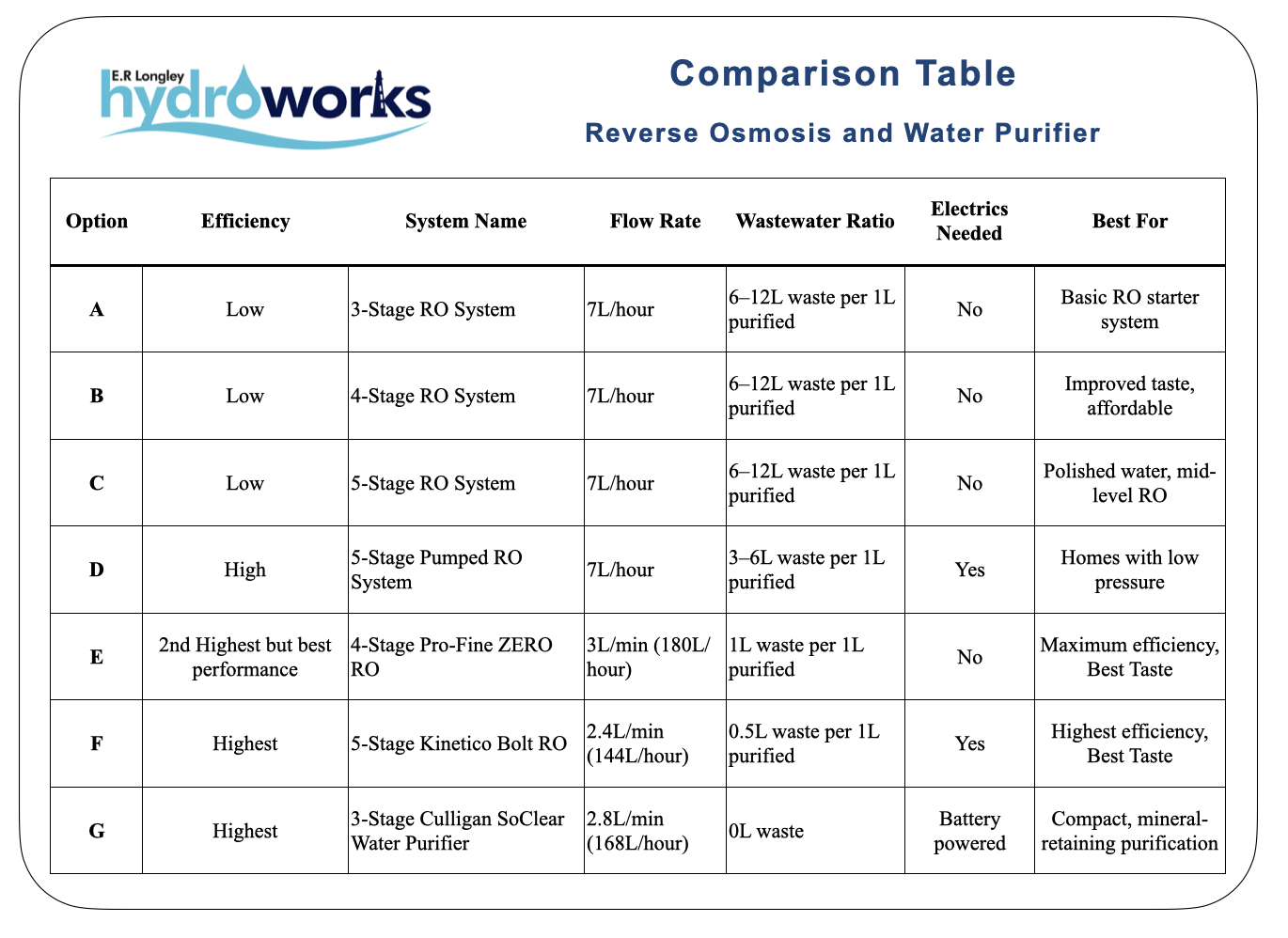
- - - - - - - - - - - - - - - - - - - - - - - - - - - - - - -
Entry-Level Reverse Osmosis (RO) Systems
These small, budget-friendly RO systems are ideal for lower-volume use and are available in simple 3-stage, 4-stage, or 5-stage options - depending on the level of water purity you’re aiming for.
The upside: They’re more affordable to buy upfront, making them a popular entry point into the world of water purification.
The downside: They tend to be less efficient with water usage, meaning slightly higher running costs and more water wasted during the filtration process.
If you’re looking for an economical way to enjoy purer water - and you’re happy to accept a little extra water consumption - these systems can be a great place to start.
💡 Worth considering: If you’re planning to use your RO system every day, one of our more efficient models may save you money in the long run.
- - - - - - - - - - - - - - - - - - - - - - - - - - - - - - - - - - - - - - - - - - - - - - - - - - -







